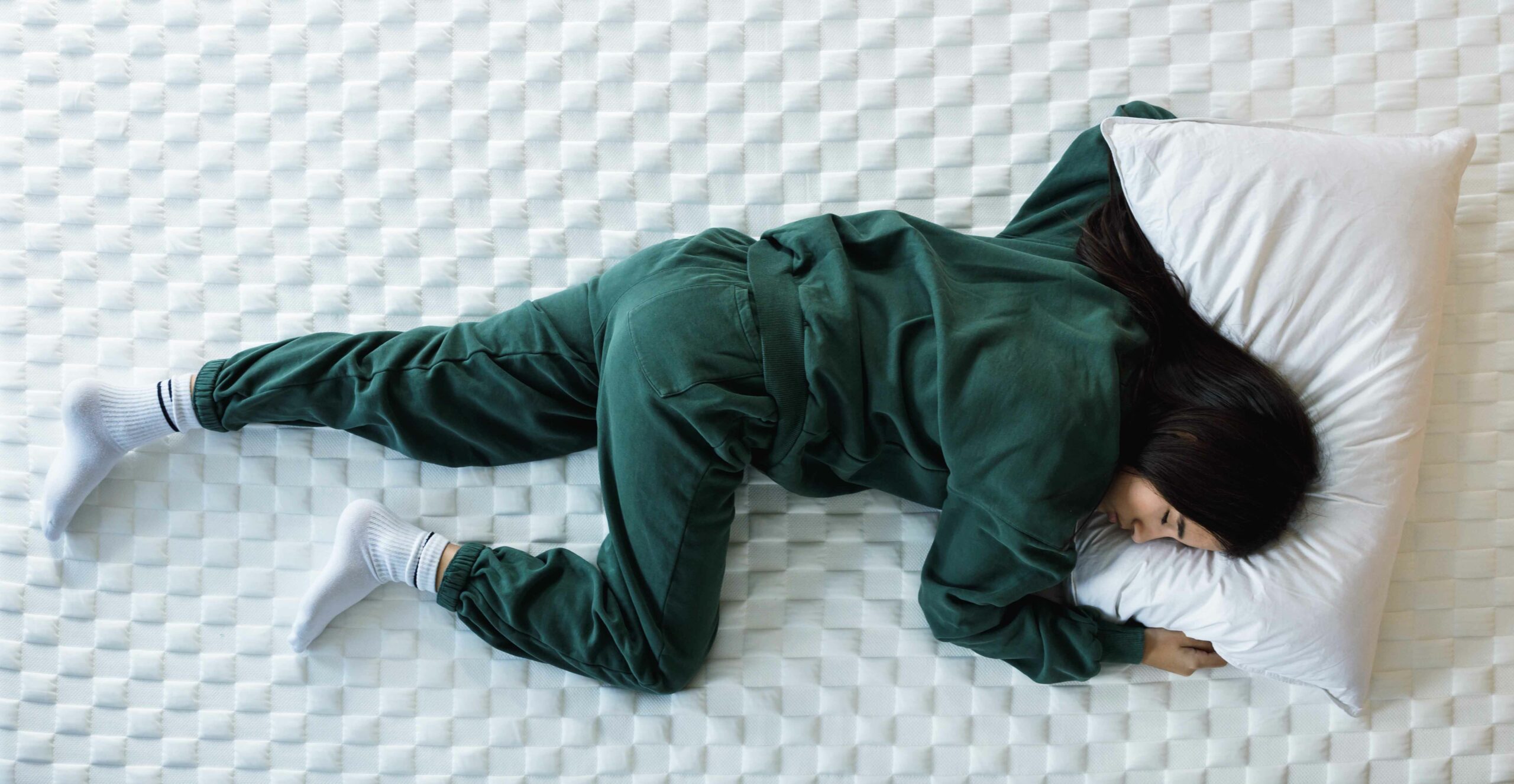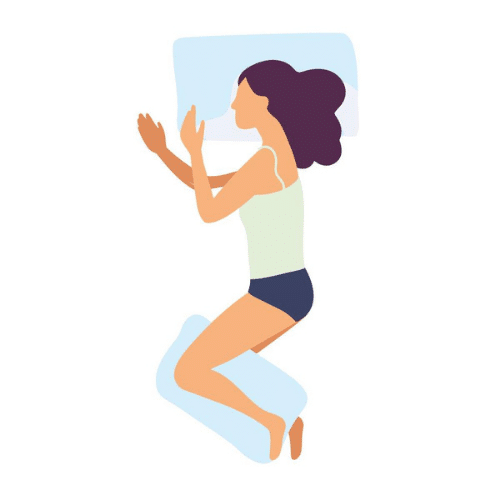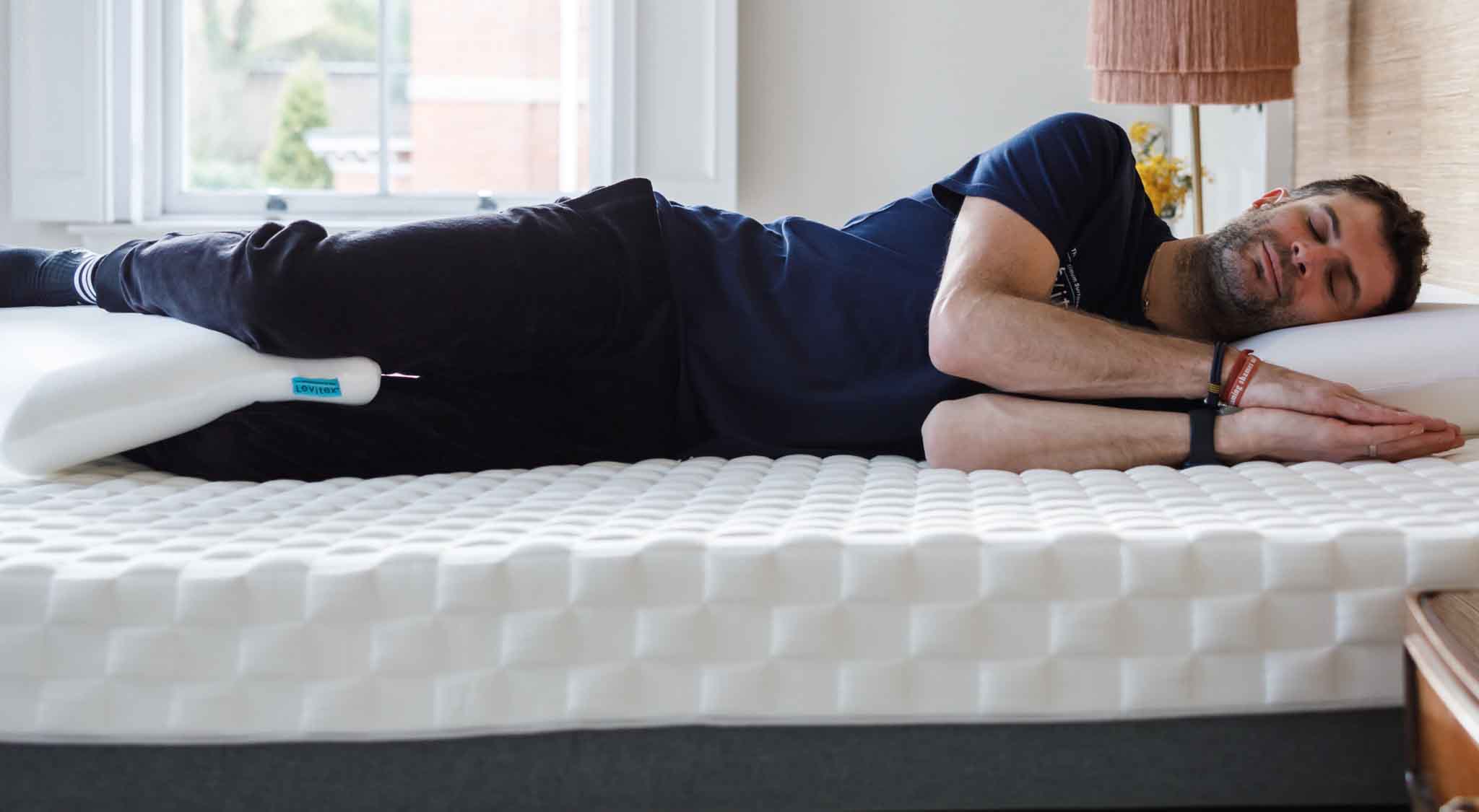We live in a world where we are constantly bombarded with messages from gurus telling us how to live better and longer, what to eat, what not to eat, what and how to wear our clothes – this list is endless!
Well it’s no different when it comes to one of our most important activities – sleep. The sleep industry is massively focused on telling you how to get the best night’s sleep.
However, our focus at Levitex is on a very specific intervention that most people can employ . This intervention is the position you sleep in. We’re concerned whether the position you lie in to go to sleep is benefiting your spine, or actually having a negative impact.
At its core, if you have a spine, you should take the time to consider just how you sleep – finding the correct position and the right sleeping surface could massively benefit your sleep quality for the rest of your life.
Is the way you sleep at night making your posture worse?
If you’re someone that wakes up, gets out of bed with unexplained aches and pains, wondering to yourself when exactly this happened, then it’s likely that your sleep posture is not in an optimal position.
You’re not alone in this. A YouGov poll found that 82% of Britons sleep in a position that’s killing their sleep quality and causing neck and back pain. Poor sleeping positions include lying on your back incorrectly, on your side whilst twisting onto your front and stomach sleeping.

A BMJ study also highlighted instinctive sleeping and resting postures of people around the world, and concluded that Westerners tend to sleep in unfavorable positions. It uncovered that while some positions cause considerable damage to posture, certain sleeping positions don’t cause any musculoskeletal issues.
Through our extensive experience of working with people in both a medical setting and also everyday life, we found the number one reason for adopting an incorrect sleeping position was comfort as well as familiarity or an association with a certain position. People tend to adopt a an associated comfortable position to fall asleep in, yet this could be causing more problems as our founder James Leinhardt explains;
“Just because it’s comfortable doesn’t mean it’s good for you. The position you fall to sleep in at night could be killing your sleep quality – and might well be causing you more long-term impacts than you realise. If you wake up with neck and back pain, this could be why.”
Our research uncovered the optimal sleeping position
Research was commissioned by Levitex, working with leading clinicians – including the company’s medical director Dr Ilan Lieberman, a pain medicine consultant and clinician at University Hospitals South Manchester – to better understand the importance of sleep positions.
So what position is the best to sleep in?
Well this comes down to adopting a position that achieves a neutral resting spine. This is accomplished by firstly sleeping on your side. However, this does not mean sleeping on your side with your knees tucked up, as this puts strain on your lower backs – as 15% of Brits in our study do.
Using findings from the 1989 research, our evidence based approach found that The Dreamer position is the optimum position to sleep in.
It’s such a vital position that according to Dr. Ilan Lieberman, all other positions impose strain and pressure on one part of your body during sleep, allowing chronic pain to set in. This unhealthy manner of sleeping might lead to stiffness and pain.
The Dreamer is the best position for night-time posture, offering maximum support for the head, neck, spine and hips. It permits the body to rest in neutral alignment with no twists or bends throughout the night.
That means that the muscles around it don’t have to work, and get a chance to recover and rest. We found that only 18% of Brits actually sleep this way.
To achieve The Dreamer position, think of it as semi-foetal side lying as shown below.

Adopting this side sleeping position allows for the shoulders, hips, knees and ankles to all stack on top of one another in a nice straight line.
In addition, use a pillow between knees and ankles to give extra support – allowing for the least amount of tension through the spine.
Simple steps like trying to fall asleep on your side, not putting your hands under your pillow, finding a pillow that properly supports your head or putting an old pillow between your legs for additional spinal support, are all quick fixes people could begin to introduce now.
The pillow you sleep on is vital to help achieve an optimised sleeping position. When looking for a pillow it has to fill the earlobe to scapula and lift your head up off the bed whilst having enough sink that you don’t feel the pressure.
Also, consider whether you’ve ever thought that you should question the size of your pillow? Having the right size pillow, not too large, not too small is crucial for maintaining a neutral neck.
If your pillow is too small then the weight of your head, which is roughly 4.5kilos will drive through your shoulder and feel like it’s being crushed with pressure. If your pillow is too big then you’re putting undue strain on your neck.
Finding the correct size pillow size couldn’t be easier.
We then need to consider the second pillow. We’re not overly concerned with the quality or size of this pillow but more the position and purpose of it.
Positioning this pillow between the knees and ankles will give you extra support – allowing for the least amount of tension through the spine.

So you now know you’re not sleeping in the correct position – Don’t worry!
You now understand that your current sleeping position is doing you no favours. So here’s how we’re going to change it.
- First of all take the pressure off, this is not an overnight fix – sleep posture is a life’s work. We’ve addressed the position you should go to sleep in so you can now begin to try it.
- Attempt the Dreamer position for 10 – 15 minutes a night and see if you get off to sleep. If you do go back to your old ways then don’t worry, just try again tomorrow – you can change the bad habits of a lifetime!


